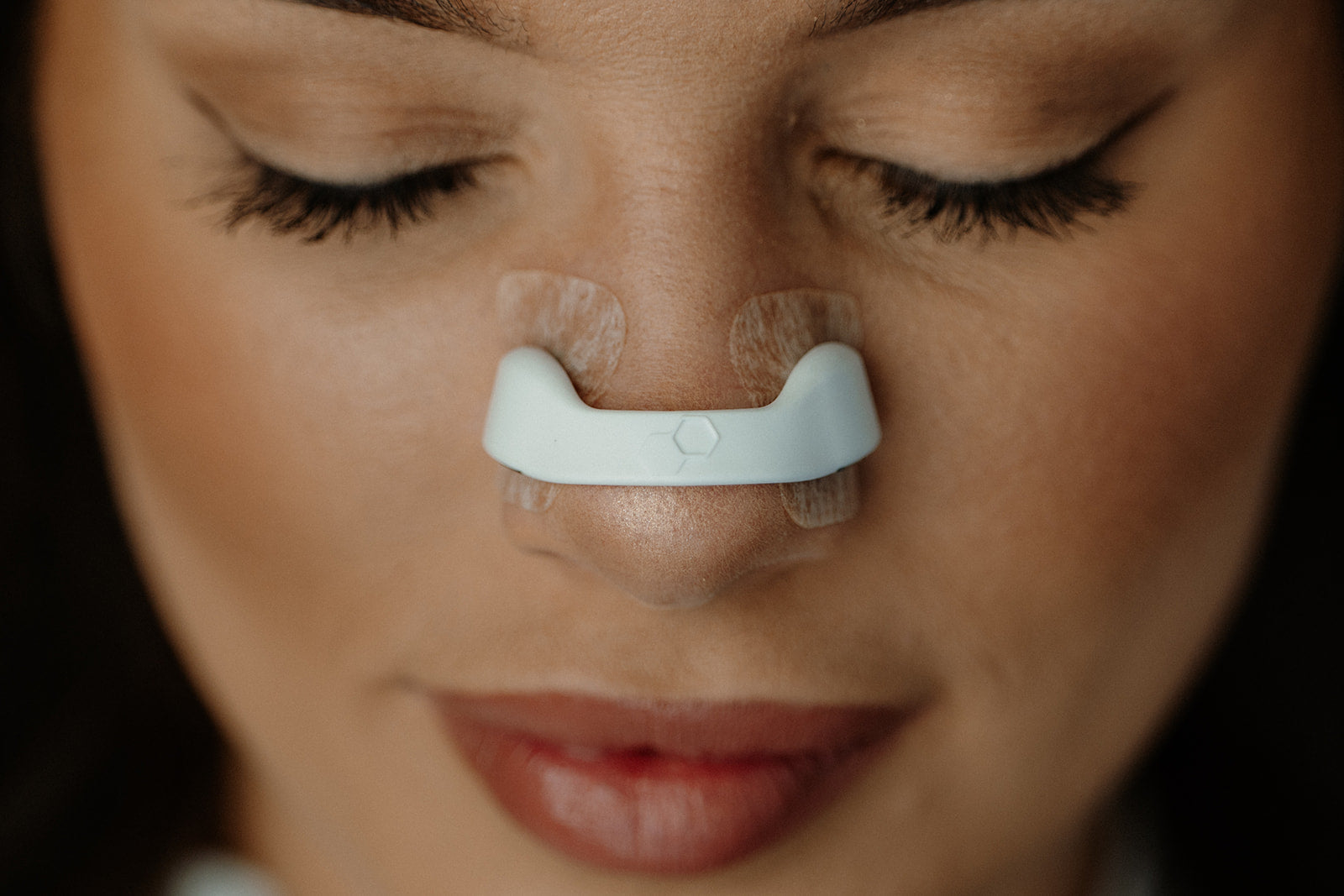Seasonal Allergies and Stuffy Nose
Allergy season can turn the joys of spring and summer into a struggle for many adults. Sneezing, nasal congestion, and disrupted sleep become daily challenges. While medications offer relief, they often come with side effects. Intake Breathing nasal strips present a non-pharmacological alternative to alleviate nasal congestion and enhance breathing comfort.
![]() Understanding Allergy Season
Understanding Allergy Season

Allergy season refers to periods when airborne allergens, such as pollen from trees, grasses, and weeds, are at their peak. These allergens can trigger allergic rhinitis, commonly known as hay fever, leading to symptoms like sneezing, a runny nose, and nasal congestion. The timing and severity of allergy seasons can vary based on geographic location and climate factors. In North America, the pollen season is now approximately 20 days longer than in 1990 due to climate change.
Most Common Allergies: What You Should Know

Understanding the most common allergens can help in managing symptoms effectively:
-
Pollen Allergies (Hay Fever)
Pollen from trees, grasses, and weeds is a prevalent allergen, especially during spring and summer. Symptoms include sneezing, runny nose, and itchy eyes.
Climate change has extended pollen seasons, exacerbating these allergies.
2. Food Allergies
The nine most common food allergens, often referred to as the "Big 9," include:
- Milk
- Eggs
- Fish
- Shellfish
- Tree nuts
- Peanuts
- Wheat
- Soybeans
3. Dust Mite Allergies
Dust mites are microscopic organisms found in household dust. They can trigger allergic reactions such as sneezing and runny nose. Regular cleaning and using allergen-proof bedding can help reduce exposure.
4. Pet Allergies
Proteins found in pet skin cells, urine, and saliva can cause allergic reactions. Common symptoms include sneezing, a runny nose, and asthma symptoms. Keeping pets out of bedrooms and using HEPA filters can mitigate symptoms.
5. Mold Allergies
Mold spores in the air can trigger allergic reactions. Symptoms include sneezing, runny nose, and itchy eyes. Controlling humidity and fixing leaks can help prevent mold growth.
How Intake Breathing Nasal Strips Work
Intake Breathing is a magnetic nasal strip applied externally across the nose. Once attached, its flexible technology attempts to straighten back to its original shape, gently lifting the sides of the nose and opening the nasal passages. This mechanical action can reduce nasal airflow resistance, making it easier to breathe through the nose. Unlike some nasal strips that may cause skin irritation, Intake Breathing is designed with skin-friendly materials to ensure comfort.
Benefits of Using Nasal Strips for Allergies
Though not a cure for the underlying causes of allergies, Intake Breathing provides several significant benefits for managing symptoms. Its design allows for the physical opening of nasal passages, offering immediate relief and improving the quality of life for those suffering from allergic reactions.
1. Improved Airflow
One of the primary benefits of nasal strips is the immediate improvement in airflow through the nasal passages. By physically lifting the sides of the nose, these strips reduce resistance to airflow, allowing for easier breathing through the nose. This can be particularly beneficial for individuals experiencing nasal congestion due to allergies, where inflammation and swelling of the nasal passages make breathing difficult.
Enhanced airflow is especially valuable at night. Nasal congestion often worsens when lying down, leading to disrupted sleep. By using nasal strips, allergy sufferers can maintain open nasal passages throughout the night, facilitating better breathing and more restful sleep. This not only improves the individual’s sleep quality but also enhances their overall well-being and daytime alertness.
2. Reduced Snoring
Nasal congestion is a common cause of snoring, which can be further exacerbated by allergies. When the nasal passages are blocked, the airflow is restricted, causing vibrations in the throat that result in snoring. Nasal strips help by opening the nasal passages, allowing for smoother and more unobstructed airflow.
Reducing snoring has significant benefits not only for the allergy sufferer but also for their sleeping partner. Snoring can disrupt the sleep of both individuals, leading to fatigue and decreased quality of life. By improving nasal airflow and reducing snoring, nasal strips contribute to a more peaceful and restorative sleep environment for everyone involved.
3. Drug-Free Solution
Another notable advantage of nasal strips is that they offer a drug-free solution for managing nasal congestion. This can be particularly appealing to individuals who prefer to avoid medications, whether due to personal preference, sensitivity to drugs, or concerns about potential side effects.
For those already taking multiple prescriptions, adding another medication can be undesirable or even problematic. Nasal strips provide an effective alternative without the risks associated with drug interactions or side effects.
The drug-free nature of nasal strips also makes them a suitable option for a wide range of individuals, including pregnant women and children, who may need to avoid certain medications.
4. Convenience and Ease of Use
Nasal strips are easy to use and apply. They do not require a prescription and can be purchased over the counter at most pharmacies and online.
Applying a nasal strip is straightforward: simply clean and dry the skin, remove the backing, and place the strip across the bridge of the nose. The strips are designed to be worn for up to 12 hours, making them suitable for use throughout the night or during the day as needed.
5. Non-Habit Forming
Unlike some nasal decongestant sprays that can lead to rebound congestion and dependency if used for extended periods, nasal strips are non-habit forming. They provide a mechanical solution to congestion without altering the body’s natural processes. This makes them a safe and sustainable option for long-term use.
While nasal strips do not address the root cause of allergies, they offer multiple benefits that can significantly enhance the management of allergy symptoms. Improved airflow, reduced snoring, a drug-free approach, convenience, and being non-habit forming are all compelling reasons to consider nasal strips as part of an allergy management strategy.
How to Use Intake Breathing Nasal Strips Effectively

To harness the full potential of your Intake Breathing Starter Kit, correct application is essential. Follow these steps for optimal results
1. Clean and Dry Skin: Ensure the nose is clean first.
2. Proper Placement: Apply the tabs to clean skin on each side of your nose (the cheekbone area).
3. Attach the band: Attach your Intake Breathing band to the tabs. The tension will gently lift and open your nasal passages.
4. Breath: Experience breathing like never before.
Integrating Intake Breathing Nasal Strips into Your Allergy Management Plan

Intake Breathing Starter Kit can be a valuable addition to your allergy relief toolkit, especially when combined with other strategies:
- Environmental Controls: Use air purifiers and keep windows closed during high pollen days.
- Regular Cleaning: Wash bedding frequently to remove allergens.
- Saline Nasal Irrigation: Flush nasal passages with saline to reduce congestion.
Order your Starter Kit, and improve your breathing today here! Shop - Intake Breathing Technology LLC






